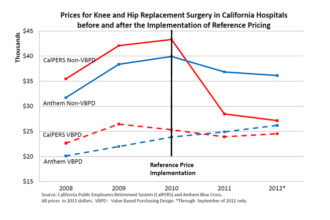Weight loss (or gain) = calories in minus calories out. Simple, right? Well actually, not as any person who has gained a few pounds and can’t shed them will attest. It seems as we grow older, our metabolism slows. There is also good evidence that once we put on weight, our body re-adjusts to ‘defend’ (that’s a word scientists use) that new weight. Stated another way, if you gain 10 pounds, then lose 10, your body goes into a state where various hunger hormones are secreted more often than they’d be in the case of someone who never gained the 10 lbs.
Weight loss (or gain) = calories in minus calories out. Simple, right? Well actually, not as any person who has gained a few pounds and can’t shed them will attest. It seems as we grow older, our metabolism slows. There is also good evidence that once we put on weight, our body re-adjusts to ‘defend’ (that’s a word scientists use) that new weight. Stated another way, if you gain 10 pounds, then lose 10, your body goes into a state where various hunger hormones are secreted more often than they’d be in the case of someone who never gained the 10 lbs. Tara Parker-Pope covered this wonderfully in a recent NY Times Magazine article called The Fat Trap.
But actually that’s only true for some of us. Those of you who were around to witness the amazing performance of Robert DeNiro in Raging Bull (1980) know he gained 50 lbs to play the character of Jake LaMotta in his later life. After the film, DeNiro lost the weight promptly and easily. He can be seen as slim and trim playing a priest in True Confessions (1981) not long after. Even if you look at modern-day pictures of DeNiro (e.g. in Little Fockers 2010), he is no where near as heavy as he was when he played the senior LaMotta 30 years before.
Ok, now are you convinced that it is more complicated than simple calories in vs. calories out?
In Personalized Prevention, Part I, I reviewed the concept of connected health as phenotypic mapping and started a discussion of how one type of data might inform our use of the other. In Part II, I discussed the psychology of engagement as applied to connected health interventions. In this post, I want to use obesity as an illustration of how it might practically work. I am not going to cover the public health story on obesity (how we live in a time of calorie excess and a dearth of opportunities to be active). I know some of you will have that top of mind and may wonder why its not mentioned. Yes, we’re all growing a bit more overweight as time goes on due to this trend. In general, we’d all benefit from eating more plants, more colorful foods, less animal-based food, less processed food and finding ways to be more active. Today, I want to talk though about how the genetics of obesity may be able to help us create segments of the population that may respond differently to connected health interventions. Also, response to connected health interventions may be a trigger to prompt genetic testing.
Although I am not an expert on genetics, I have studied up on the genetics of obesity as I am giving at talk at BioIT, May 25, at the BIO meeting in Boston. We are a long way off from having exact obesity genotypes the way we now do for certain cancers and the like. But the genetics argue that we can distinguish at least 5 genotypes:
- Thrifty genotype: low metabolic rate and insufficient thermogenesis
- Hyperphagic genotype: poor regulation of appetite and satiety and propensity to overfeed
- Sedens genotype: propensity to be physically inactive
- Low lipid oxidation genotype: propensity to be a low lipid oxidizer
- Adipogenesis genotype: ability to expand complement of adipocytes and high lipid storage capacity
Imagine a world where we knew this information before or shortly after birth. Could you envision someone with either the thrifty genotype or the sedens genotype being targeted for an exercise program involving activity monitoring and customized motivational tools as were discussed in Parts I and II? If we got to these folks when they were young, do you think we’d have the ability to reorient their lifestyle choices for the better?
One example worthy of consideration is the partnership we have with the Boston Public Schools to encourage activity in children from some of our underserved schools. I blogged on this some time ago. The 2011 program was such a success that we’ve expanded it this year, and we are just launching the spring 2012 program. The children who took part last year shared numerous stories about how wearing a smart pedometer, getting weekly feedback and participating in a classroom competition on activity helped them become more aware of how active they are, encouraged them to be more active and even bring the culture of activity into their homes.
When people are on a connected health program, we can determine at an individual and at a population level who is active and who is not responding to the program. Imagine that we could take those data and compare them with genetic data to elicit finer and finer comparisons.
I am wildly enthusiastic about personalized connected health, about the opportunities to combine genetic and phenotypic data to gain insights about individuals and about personalized prevention.





